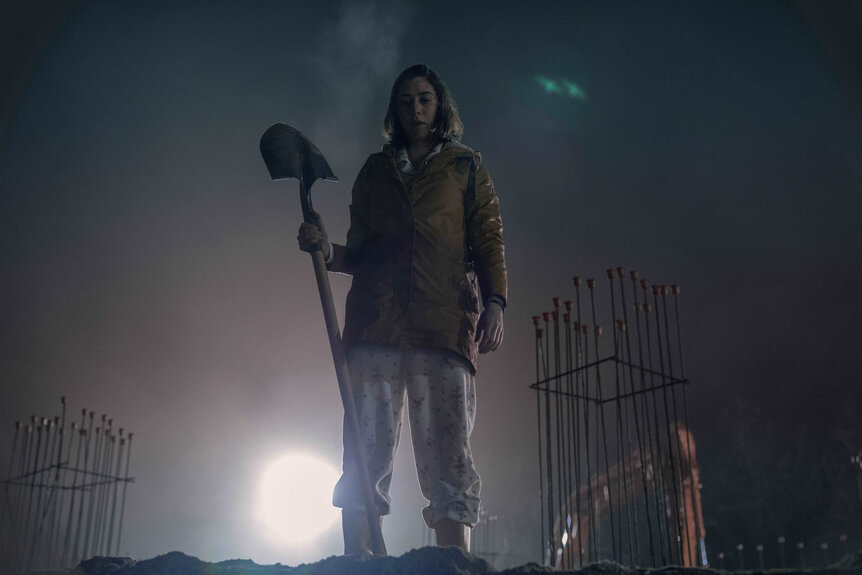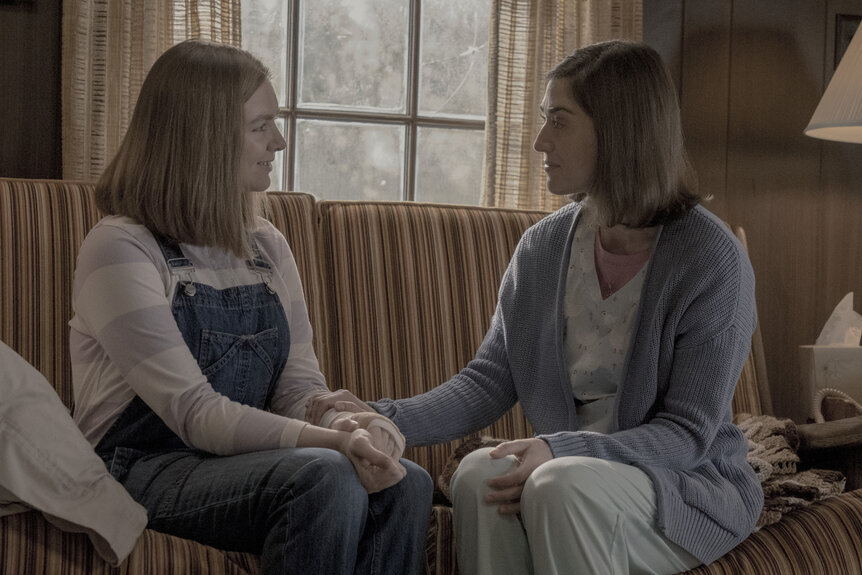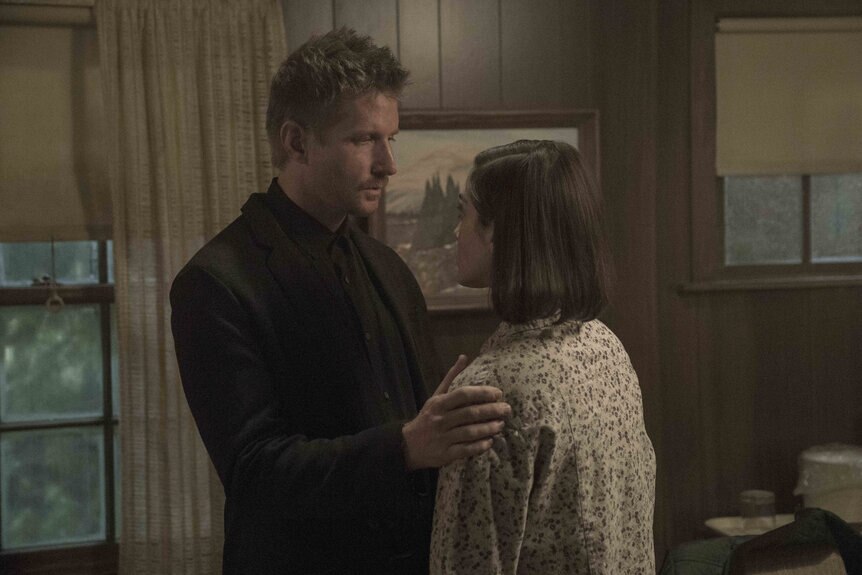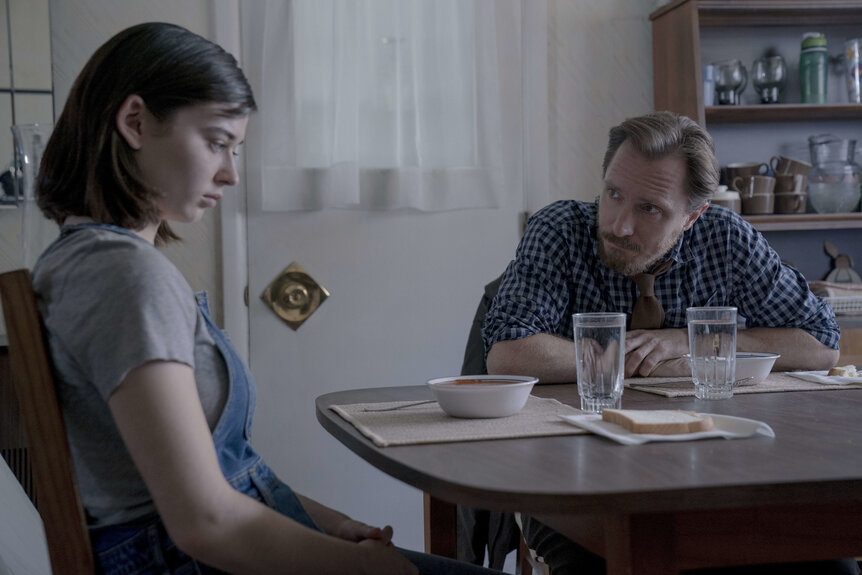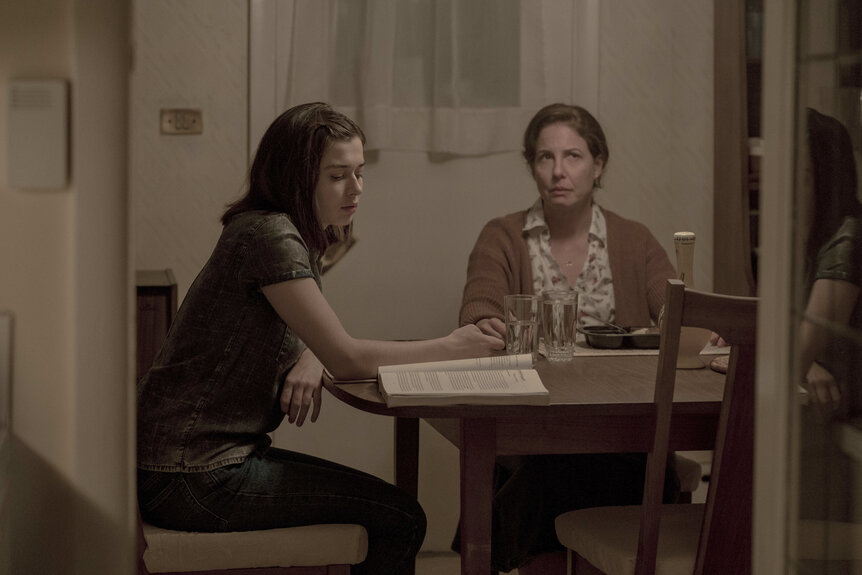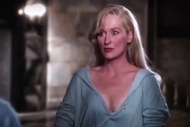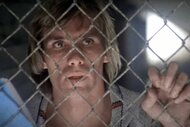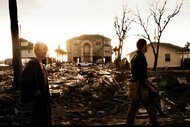Create a free profile to get unlimited access to exclusive videos, sweepstakes, and more!
Why Annie Wilkes is the perfect Castle Rock protagonist for Season 2
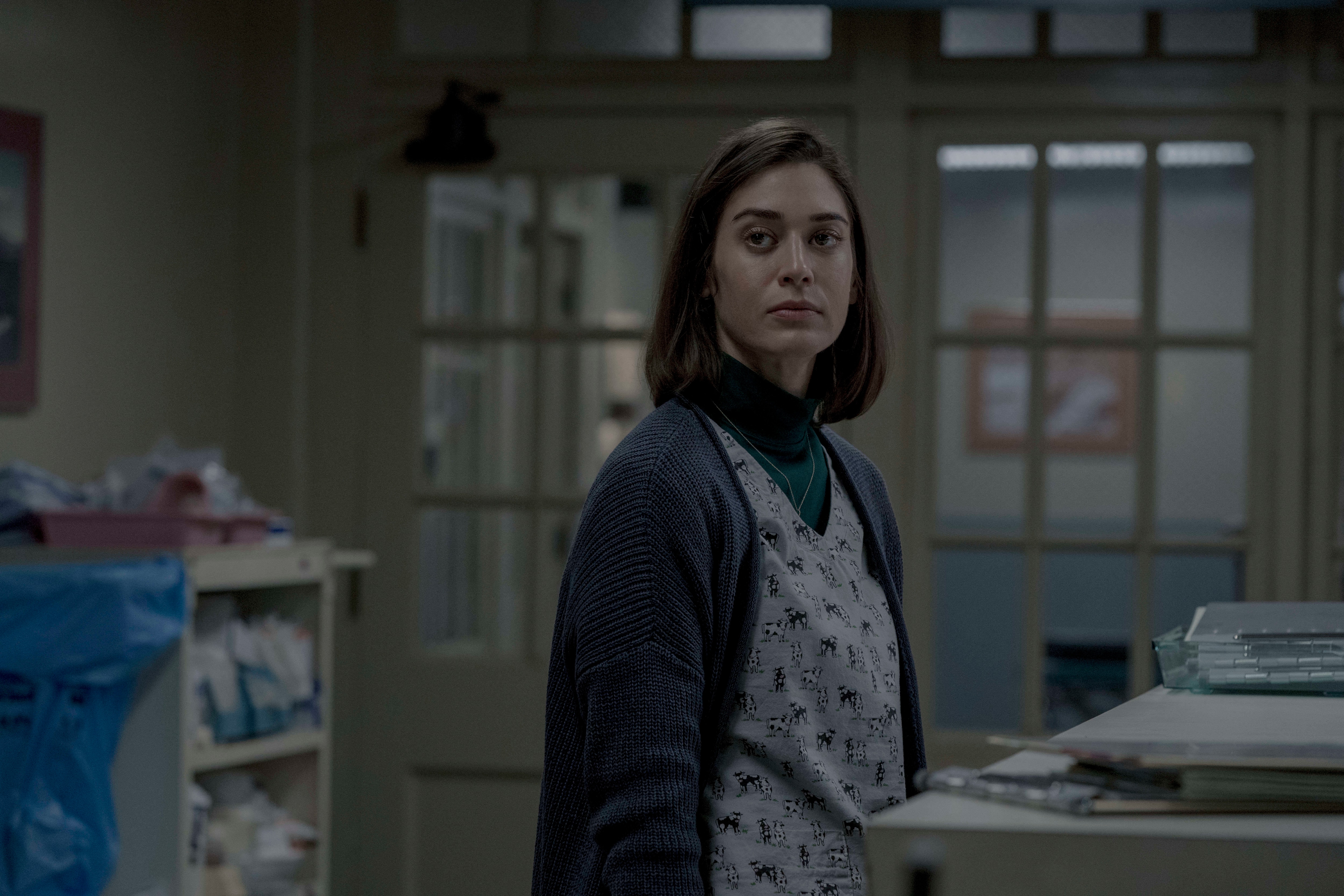
Annie Wilkes is number 17 on the American Film Institute's list of 100 Greatest Heroes and Villains, sandwiched between Noah Cross from Chinatown and the Jaws shark. Kathy Bates won an Oscar for playing this role in 1991, and she is one of Stephen King's most beloved characters. Taking on this mantle is no easy feat, but Season 2 of Castle Rock is demonstrating it is more than up to the challenge. Lizzy Caplan's performance captures the intensity, anger, and fear without reducing Annie to a caricature or an impression of Bates.
Castle Rock isn't a direct adaptation of the vast work of Stephen King; rather, it is an anthology series using the locations, characters, and events of this connected universe to tell a new story. The first season referenced Jack Torrance from The Shining and alluded to the darkness of a town like Derry, but the main threads steered clear of King's most famous creations. It is a mixtape of King's work, which adds an extra layer for fans without alienating those who don't possess encyclopedic knowledge.
Season 2 is not adopting this same approach with its choice of lead, instead choosing to portray one of King's most recognizable figures before she became Paul Sheldon's "number one fan." Scrapbooks in both Misery the movie and novel reveal a past littered with murder, but Annie is enough of a blank slate to justify delving deeper into her motivation and history. After five episodes of Season 2, it is clear why she was picked to headline this story soaked in death, redemption, and paranoia.
Spoilers for Episode 5 of Castle Rock, "The Laughing Place," ahead.
In Misery, Annie lives a secluded life with only her love of the historical romance book series by Paul Sheldon to keep her company — and her beloved pig, Misery. She is far from alone in Castle Rock, sharing a seemingly never-ending cross-country trip across the United States with her now-teenage daughter Joy (Elsie Fisher). The pair never stay in one place for too long for a couple of reasons. Annie's job as a nurse gives her access to the antipsychotic meds that keep her stable, but there are only so many pills she can steal before she is caught. There is also the small matter of being on the run from the authorities for a crime far more serious than drug theft.
What begins as a happy adventure on their journey to the mythic Laughing Place, singing along to Carly Simon's "Let the River Run," ends with Joy longing for regular teenage interactions. Castle Rock is not an intended destination, but a car crash leaves them without their mode of transport. Circumstances turn the mother/daughter duo into temporary residents of a town that Annie notes is not a "good place."
Misery also begins with an automobile accident that turns Paul Sheldon into Annie's bedbound captive. In Castle Rock Annie has the appearance of freedom, but without her pills she becomes untethered to reality. In the past Annie has hospitalized herself — Joy mentions an incident in Missouri — but she is adamant this is not an emergency, despite the hallucinations she is experiencing. Joy drugs and physically restrains her mother, fearing what she might do next. Again the roles are reversed: Annie is the Paul of this scenario.
Of course, Annie isn't Paul Sheldon, nor is this portrayal a direct prequel to Misery. The story isn't ignoring everything the audience knows about this character; nevertheless, it isn't fully relying on the scrapbook information detailing Annie's bloody past. As with everything else Castle Rock, it takes beloved aspects and injects a fresh perspective on the King universe. The mannerisms, disdain for crude language, and repeated use of "dirty bird" are a direct nod to Kathy Bates' Oscar-winning performance. "Cockadoodie" has yet to be uttered, but the trailer teased this signature profanity substitute.
Outbursts of uncontrollable rage link the two versions of this character, and the Annie of Castle Rock also has blood on her hands. The first episode opens with an adolescent Annie (Ruby Cruz) running through a forest wearing a bloody shirt and ends with her disposing of a body in the present. Killing Ace Merrill (Paul Sparks) with an ice cream scoop after he threatens Joy shows just how far she will go to protect her daughter — and that truly anything can be turned into a weapon.
Death seeks her at every corner of this small town as she is haunted by the specter of a figure we later learn is her father. Annie killed her dad in the novel too, but her actions in Castle Rock are not premeditated. Pushing him in a rage-fueled moment results in a rather gruesome impaling on a wooden staircase. The fifth-episode flashback to her childhood reveals a close relationship with her father that is ruined by the arrival of another woman. Annie has helped her father with his novel, typing up pages and giving notes on plot developments. Dedicating his book to Rita (Sarah Gadon) is a betrayal, but the real crime is referring to her as his "Laughing Place." He has repeatedly told his daughter that she is his "number one fan" (Misery callback alert!). Unfortunately, the book declaration suggests otherwise.
She doesn't mean to kill her father, but when she grabs the scissors and stabs Rita, the motive is murder. She picks up baby Evangeline and flees into the woods — answering what she was running away from in the flashback that opened the season. Her mother once talked about "getting away clean" before driving her car into the river (with Annie inside), and Annie has come to the same drowning conclusion. Laughter breaks the spell just as Evangeline is about to be plunged into the cleansing lake, saving her from a watery grave. At this moment she becomes Joy, Annie's perfection. This is her Laughing Place.
In the original novel, the Laughing Place is more insidious, as it is where Annie disposes of those she has killed: "I'm going to put him in his car and drive it up to my Laughing Place. I'm going to take all of his things. I'll put the car in the shed up there and bury him." Earlier she tells Paul, "Sometimes I do laugh when I go there. But mostly I just scream."
Annie has kept the identity of Joy's father a secret for a good reason, but a town like Castle Rock has a habit of churning up family history no matter how long ago the incident took place.
It is easy to get a child to indulge in make-believe stories, but when they begin to question their place in the world those same fairy tales lose their power. Joy no longer wants to go to the Laughing Place, as she desires stability and friends her age. Curiosity cannot be contained with deflections. As soon as Joy is in an environment with other teens, the spell cast by her co-dependent existence with Annie is broken. It doesn't help that Annie is without her medication or that she is experiencing vivid hallucinations.
There is a danger of portraying Annie's mental health issues with broad brushstrokes that reduce her to a series of tropes. Her obsession with Paul Sheldon in the King novel and Rob Reiner's movie adaptation turns her into a surrogate for King's fans, the perils of fame, and addiction. Bates is incredible in this role as the bookish yet terrifying caregiver-turned-captor, but in Castle Rock Annie's inner life is expanded beyond the Angel of Death and obsessive fan depiction.
There is no evidence, as of yet, that Annie's string of crimes in the source material is part of this version of the character. Yes, she is a killer and a kidnapper, yet as a nurse she seems pretty competent at her job. Sure, she steals drugs rather than going to see a doctor, but she fears not being able to work. Her father's vocal stance against psychiatry and psychology has left its mark. It isn't that Annie shouldn't be reprimanded for stabbing Rita and taking her child. She needs professional help because going it alone is not the solution.
Rather than one specific diagnosis, Annie has been self-medicating and self-diagnosing, using the internet in part to keep track of her symptoms. TV and film often lean into damaging stereotypes regarding the correlation between mental health and violence, and so far Castle Rock is drawing a line between Annie's history and the heightened atmosphere of this town. Annie's rage is documented from an early age, as is her reluctance to seek a professional diagnosis (informed by her father). Her mother had a history of depression, which led to her suicide and the attempt on Annie's life. It is a complex set of circumstances that has hit a boiling point in a town steeped in horror.
At this halfway point of Season 2, choosing this iconic character as the protagonist is more than justified. The writing and Caplan's portrayal subvert the obsessive aspects of Annie as merely a "crazed fan" and Angel of Death, instead offering nuance and depth to this depiction.
